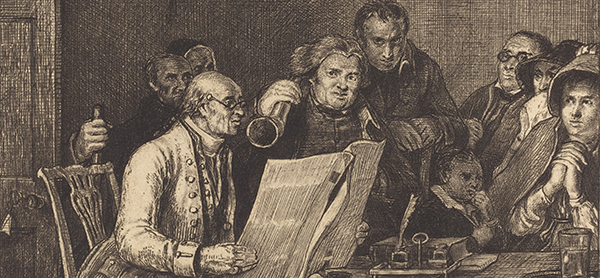Wills and testamentary records
Published in Issue 3 (May/June 2021), Volume 29By Fiona Fitzsimons
Wills and testamentary records provide some of the most reliable and descriptive evidence for family history. Documents were made in the testator’s own lifetime and signed before witnesses. The testator usually defined his or her relationship to all beneficiaries, and divided property of all types (real and personal) among them.
From the thirteenth century, the Common Law prevailed in parts of Ireland. Real property (real estate) was inherited by the heir of the deceased, the eldest surviving son by the rule of primogeniture. After 1703 the right to inherit by primogeniture was withheld from Catholic landed families, to encourage conformity. (The relevant Act (2 Anne c6 Ireland) was only removed from the statute book in 1878.)
Daughters only inherited on the failure of male heirs, at which time property was divided equally among them as ‘heirs general’. Personal property (money, furniture, crops, tools etc.) could be disposed of at will but, influenced by church law, one third (the ‘jointure’) was settled on the widow for her lifetime or until she remarried. Church law influenced the customs that grew up around inheritance. Making a will was a right extended to men over fourteen and unmarried women over twelve years, corresponding with the medieval canons for the minimum age of marriage. Church courts administered all testamentary records, issuing grants of probate for wills and, where the descendant died intestate, letters of administration.
Wills for property valued at £5 or less were proven in the consistorial or local diocesan courts. Wills for property valued at over £5 in two or more dioceses were proven in the prerogative court of Armagh. In practice, between 1272 and the early nineteenth century the prerogative court sat in St Patrick’s Cathedral in Dublin. For the first 500 years it wasn’t common practice in Ireland to make a will. By the early 1800s, however, population growth in the previous century, the rising middle class and inflation led to more wills, stretching the church courts almost to breaking point. In 1857 the Probates and Letters of Administration (Ireland) Act transferred testamentary authority to the newly created probate courts. In 1858 a new principal registry opened in Dublin, and eleven district registries in Armagh, Ballina, Belfast, Cavan, Cork, Dublin, Kilkenny, Limerick, Derry, Mullingar, Tuam and Waterford.
All original documents (wills, grants of probate, letters of administration) in the principal (Dublin) registry before 1904 and in the district registries before c. 1900 were destroyed. There are, however, surviving will books for the principal registry for some isolated years: 1874, 1876, 1891 and 1896. After 1858 there is a much better survival of will books for the district registries. It must be remembered that it takes a while to embed any new system of governance, and the registry will books aren’t complete, particularly in the early years.
It’s not all bad news for Dublin. In the National Archives there are two archival boxes of wills and court documents, generated by cases brought before the courts c. 1905–21. The ‘contentious cases’ files include wills, testamentary records, affidavits and related court papers where a will was contested.

Above: ‘Reading the will’ by Sir David Wilkie, 1819. (National Gallery of Art, Washington)
Fiona Fitzsimons is director of Eneclann, a Trinity campus company, and of findmypast Ireland.
(Written in memory of Prof. William Niall Osborough, who first explained to me the intricacies of testamentary records, and of Gregory O’Connor, who first showed me the ‘contentious cases’ material.)
















